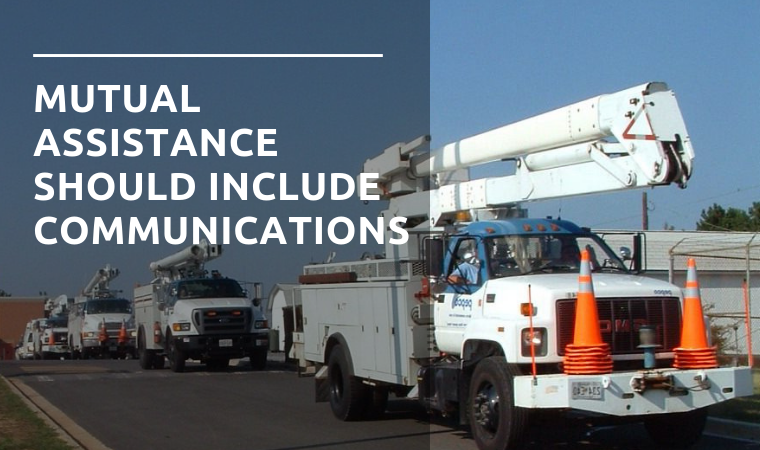Thinking about North Carolina and the recovery efforts underway after Hurricane Florence, I am reminded that nearly at this exact moment one year ago, I was among the many thousands attempting to drive out of Florida in advance of Hurricane Irma’s arrival. Northbound I-75 was at a standstill for hundreds of miles while the southbound lanes were largely open. Callers to area talk radio stations were livid that the order was not given to open the southbound lanes for northbound evacuees.
That side of the interstate, however, was not exactly empty. Instead, something truly remarkable was happening there.
On southbound I-75, caravans of utility vehicles, tree crews and bucket trucks, flatbeds bearing transformers and heavy equipment were barreling directly toward the approaching storm even as we attempted to flee in the opposite direction.
Crew carriers were bringing in personnel. Fire trucks and other emergency vehicles all were racing south. The signage on these vehicles featured company names from cities far removed from Florida. I swelled with pride to see a few teams from my hometown utility – BGE – among the southbound battalions.
Electric utilities across America participate in a protocol called Mutual Assistance through which crews, equipment and material are shared from areas far outside the storm zone with those companies and communities about to be struck. It is a brilliant and compelling method for ensuring that all the necessary resources are mobilized and dispatched to the locations most likely to be hardest hit. And it really works.
By the time it left the state, Hurricane Irma had cut electrical power to an estimated 6.7 million customers in Florida. That number totaled effectively two-thirds of all electricity customers in the state. Eight days after the storm, the number of customers without power was down to 100,000 or 1 % of customers in the state. The scope and magnitude of the effort that went into making that possible is nearly incomprehensible. Imagine rebuilding the power infrastructure for a population of more than 6 million people in a little more than a week. To say it was a truly heroic undertaking is a truly extreme understatement.
In 2012, I had a first-hand experience of Mutual Assistance as our communication team mobilized in support of Pepco, Delmarva Power and Atlantic City Electric. Just as line crews and engineers deployed throughout the potential impact zone, our client Pepco sent us to its operations centers where we helped to prepare and stage nearly constant media briefings, handled outage update dissemination, and participated in ongoing customer communication. The intrepid Stanton team embedded with client professionals in locations throughout the expected storm zone where additional PR arms and legs were needed. Many of us, along with the utility’s technical teams, were standing in the bull’s eye when Sandy roared ashore.
This gave us a front-row view of the utility crews, some from states as far as a thousand miles away, working together seamlessly as if they were all employed by the same company. They rolled out in total darkness and driving wind and rain all knowing what to do and where to go.
Meanwhile, in the communications offices, company spokespersons met the press, provided detailed information, posted outage maps to websites, and answered unending questions. They gathered technical details from the teams in the field, translated the language of voltage step ups, transmission and substations to lay English, and did their best to help the public understand what was being done. The comms teams worked around the clock just as the crews “in the field” making sure the latest information was available for the earliest news broadcasts. Customers in darkened homes listening on battery operated radios knew exactly what was happening, where and when, and what they needed to do to stay safe.
Those of us not on the ground in North Carolina may not be able to understand the magnitude of the effort now unfolding in Wilmington, Lumberton, Fayetteville and other small communities throughout the impact zone. We lucky few who have been behind the scenes recall our experience and send our best wishes to the men and women now laboring under dangerous conditions.
It is inspiring to think that communications professionals can collaborate in the utility industry’s Mutual Assistance program.
All of us feel enormous pride and even a sense of being privileged that Pepco included us as part of its team despite the dire circumstances. We learned a lesson that even if we cannot help string power lines, we can, as communicators, play an important part in the process of recovery.
Perhaps the time has come for the PR industry and our professional societies to work on the development of a Communication Mutual Assistance protocol so we too can race south toward the next approaching storm and support the work of informing our fellow citizens in need.
